With Resolution 71 of the Politburo on breakthroughs in education and training development, the innovation of curriculum and textbooks has entered a new phase, from "one curriculum, many textbooks" to "one curriculum, one unified set of textbooks".
In the past time, there have been many discussions and proposals from National Assembly delegates, scientists, education managers, teachers... on the plan to build a unified set of textbooks in the spirit of Resolution 71. The opinions focus on the following three basic options: organizing the compilation of a completely new set of textbooks; choosing one of the three existing textbook sets as a common set of textbooks; choosing a number of textbooks in each set of books to combine into a common set of textbooks.

Resolution 71 of the Politburo on breakthroughs in education and training development stipulates the implementation of a unified program and set of textbooks.
PHOTO: DAO NGOC THACH
Each option has its own advantages and limitations. Depending on the innovation requirements, what is considered a priority to choose the appropriate option.
Compiling a new set of textbooks: takes a lot of time
The plan to organize the compilation of a new set of textbooks should be considered first if there is enough time and a strong enough team of authors can be mobilized. In terms of time, it takes about 4-5 years to compile a new set of textbooks for 12 grades. The current textbooks take 6 years to compile (from 2018-2023, not including the preparation time of 1-2 years before that, short or long depending on each set of books, plus a few months of training in early 2024). In addition to compilation, including editing, illustration, especially primary school books need many illustrations, there must also be time for trial teaching, appraisal (internal appraisal of the publisher and national appraisal), asking for comments from teachers, experts and training teachers.
Regarding the authors, in our current team of teachers and scientists, there are quite a few talented people who have not participated in compiling textbooks. However, the number of people who meet the requirements for a textbook author is not much. Writing textbooks requires not only a deep understanding of related scientific fields, but also experience, pedagogical skills, understanding of domestic and international programs and textbooks, good presentation skills, the ability to work in groups and dialogue...
Option 1 has the advantage of having a completely new set of textbooks and opens up the hope of having a set of textbooks called "standard" as many people wish. However, it requires time to implement and a team of authors to execute.
On the afternoon of October 22, during a group discussion on a number of draft laws, speaking with National Assembly delegates, Minister of Education and Training Nguyen Kim Son said that a set of textbooks for the whole country will be deployed from the 2026-2027 school year. The Ministry is developing a project, in which it is expected that this November there will be a specific plan for a unified set of textbooks. Regarding the process, the Minister said that he will ask for the General Secretary's opinion on the project, then submit it to the Prime Minister for approval.

The set of textbooks for the whole country will be deployed from the 2026-2027 school year. The Ministry of Education and Training is developing a project, and it is expected that there will be a specific plan this November.
PHOTO: NHAT THINH
That information shows that option 1 is unlikely to be implemented unless the Ministry of Education and Training has almost finished compiling the new textbooks, which we do not know about. Because from now until the textbooks must be printed and deployed for training, there are only a few months left.
Choose one of the three existing textbooks: a difficult choice
According to Resolution No. 281/NQ-CP of the Government and according to the report of the Minister of Education and Training to the National Assembly deputies, the plan to deploy a unified set of textbooks nationwide from the 2026-2027 school year and provide free textbooks to all students from 2030 cannot be delayed.
So, choosing one of the three existing textbooks, and then editing it to make a common textbook set seems to be the most feasible option. This option not only ensures progress but also helps to minimize wasted resources, significantly inherits tried and tested teaching materials and does not cause much disruption to teaching activities in schools. In recent years, publishers have organized training for most teachers to use textbooks from all three sets of books regardless of which set of books the teacher chooses to teach. This is a significant advantage, helping the training to teach according to the upcoming unified textbook set not take much time. However, deciding which set of textbooks to choose is a difficult choice.
All three sets of textbooks have been assessed and approved by the Ministry of Education and Training and have been widely used at different levels. If it is necessary to select a set of textbooks, it is necessary to provide scientific, objective and transparent criteria so that the selection results can convince the leaders of the Party, the State and the public in general, especially teachers.
Combining several textbooks into a new set: concerns about systematicity
In addition, selecting a number of textbooks from each set of books to combine into a common set of textbooks can be considered a variation of option 2. This is also an option with certain advantages, both meeting the requirements of progress and ensuring relative fairness between sets of books because each set of textbooks has textbooks for a number of selected subjects or levels.
However, this solution has the limitation that a unified set of textbooks may not ensure systematicity and consistency between subjects and levels of education. For example, with Literature textbooks, the same work can be taught in middle school in one set of books, but taught in high school in another set of books. The difference in the way knowledge is explained in different sets of books is also an obvious phenomenon.
For a "national textbook set", duplication or inconsistency is an unacceptable limitation. Moreover, the selection of textbooks for each subject and each grade level in each set must have scientific and objective criteria as in option 2, not be divided equally mechanically. And the selection process is also very difficult, possibly even more complicated than option 2 because it has to handle many subjects and many levels.
According to option 3, the combination can be carried out in many ways, for example: 1/ Textbooks of a subject at all 3 levels (primary, secondary, high school) in the new set of textbooks are taken from an existing set of textbooks, for example, textbooks for subject A are chosen from set 1, textbooks for subject B are chosen from set 2...; 2/ Textbooks of a subject at all 3 levels in the new set of textbooks can be combined from textbooks of 2 or 3 sets of textbooks depending on the advantages of each set of textbooks at each level (according to the criteria issued by the Ministry of Education and Training); 3/ Textbooks of a level in the unified set of textbooks are taken from one of the existing sets of textbooks...
If following option 3, no matter how the grafting is done, it will take time to review and edit to ensure systematicity and consistency.
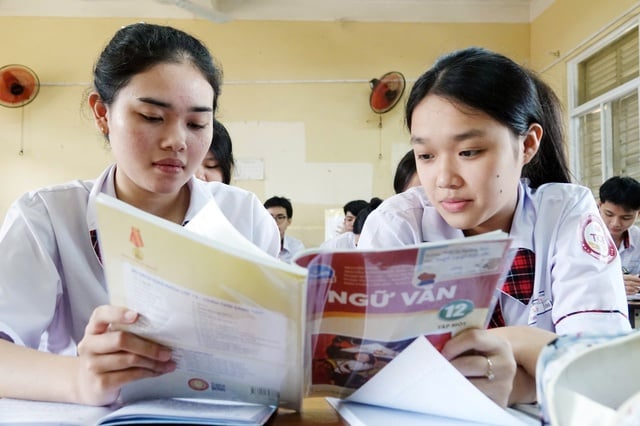
Resolution 71 of the Politburo on breakthroughs in education and training development, the innovation of programs and textbooks has entered a new phase, from "one program, many textbooks" to "one program, one unified set of textbooks".
Photo: Dao Ngoc Thach
Textbooks are teaching materials and do not have legal nature.
When the innovation process according to the policy expressed in the resolutions of the Party, the National Assembly and in the spirit of the 2018 General Education Program takes a step forward, the role of textbooks will be more correctly perceived. Although using a unified set of textbooks may cause the perception of textbooks to be at risk of returning to the old way, if the Ministry of Education and Training has close direction, especially in the work of testing and assessment (for example, continuing to regulate the use of materials outside of textbooks when making test and exam questions), the new concept of textbooks will not be deviated.
As one of many teaching materials, not having a legal nature, the unified textbook set will not have the exclusive position as before. Other learning materials, including textbooks that are not selected, still need to continue to contribute to teaching activities, especially for competent and dedicated teachers in schools with conditions.
To implement the free textbook policy fairly and effectively
At the National Assembly, many delegates supported the policy of building a common set of textbooks from 2026 - 2027 and making them free from 2030, considering this a humane policy, in line with global trends. However, the proposal to allow localities to have the conditions to make them free first has met with mixed opinions because it will create inequality in access to education, contrary to the spirit of the 2013 Constitution: prioritizing education for disadvantaged areas, ethnic minority areas, and the poor.
To implement the free textbook policy fairly and effectively, it needs to be implemented synchronously in four directions.
First of all, the Central Government needs to prioritize resources for the most disadvantaged areas - where students are at high risk of dropping out. These areas need to access policies as soon as possible.
Second, for localities with developed economic conditions, early implementation should be allowed but focusing on vulnerable groups such as poor students, children of workers, freelance workers, and border boarding schools.
Third, to make the free textbook distribution effective and economical, the quality of textbooks must be improved, both in content and printing and binding techniques, to ensure long-term use. Students borrowing books from the library need to be conscious of preserving them, and books purchased by their families should be donated after the school year.
Finally, the Ministry of Education and Training needs to promote the digitization of textbooks and build a shared open learning resource warehouse, providing free of charge to teachers and students nationwide. This is a sustainable direction, reducing costs, and at the same time narrowing the gap in knowledge access between regions.
Ho Sy Anh
Source: https://thanhnien.vn/mot-bo-sach-giao-khoa-thong-nhat-truoc-gio-g-185251111220407686.htm




![[Photo] Prime Minister Pham Minh Chinh receives Lao Minister of Labor and Welfare Phosay Sayasone](https://vphoto.vietnam.vn/thumb/1200x675/vietnam/resource/IMAGE/2025/11/11/1762872028311_dsc-2246-jpg.webp)











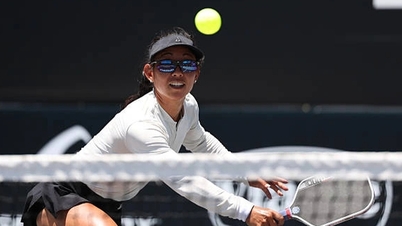


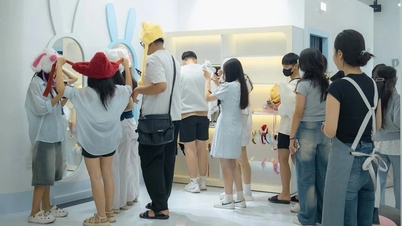
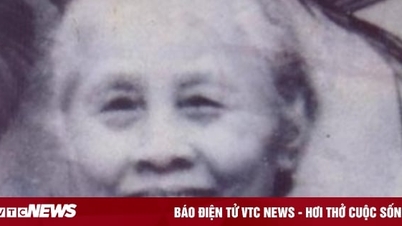



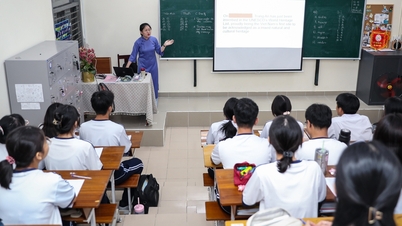







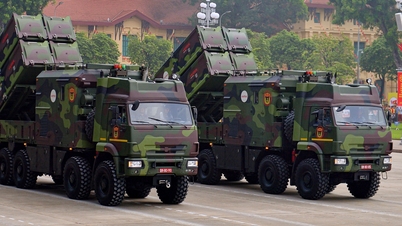
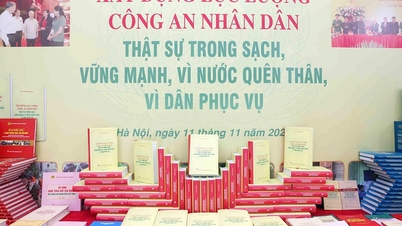












































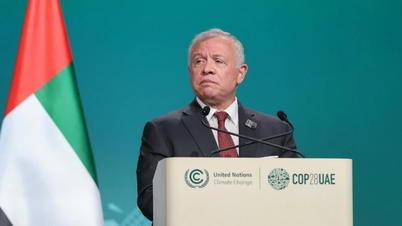

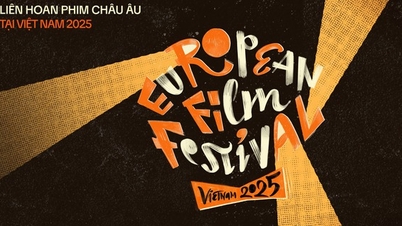







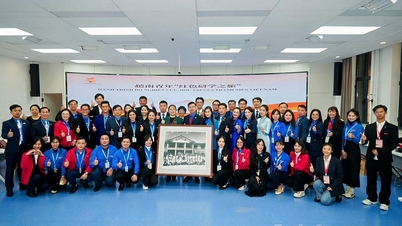





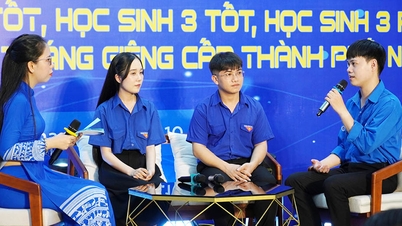

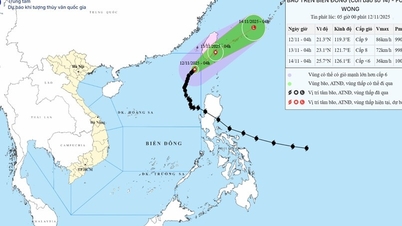






![Dong Nai OCOP transition: [Article 3] Linking tourism with OCOP product consumption](https://vphoto.vietnam.vn/thumb/402x226/vietnam/resource/IMAGE/2025/11/10/1762739199309_1324-2740-7_n-162543_981.jpeg)








Comment (0)